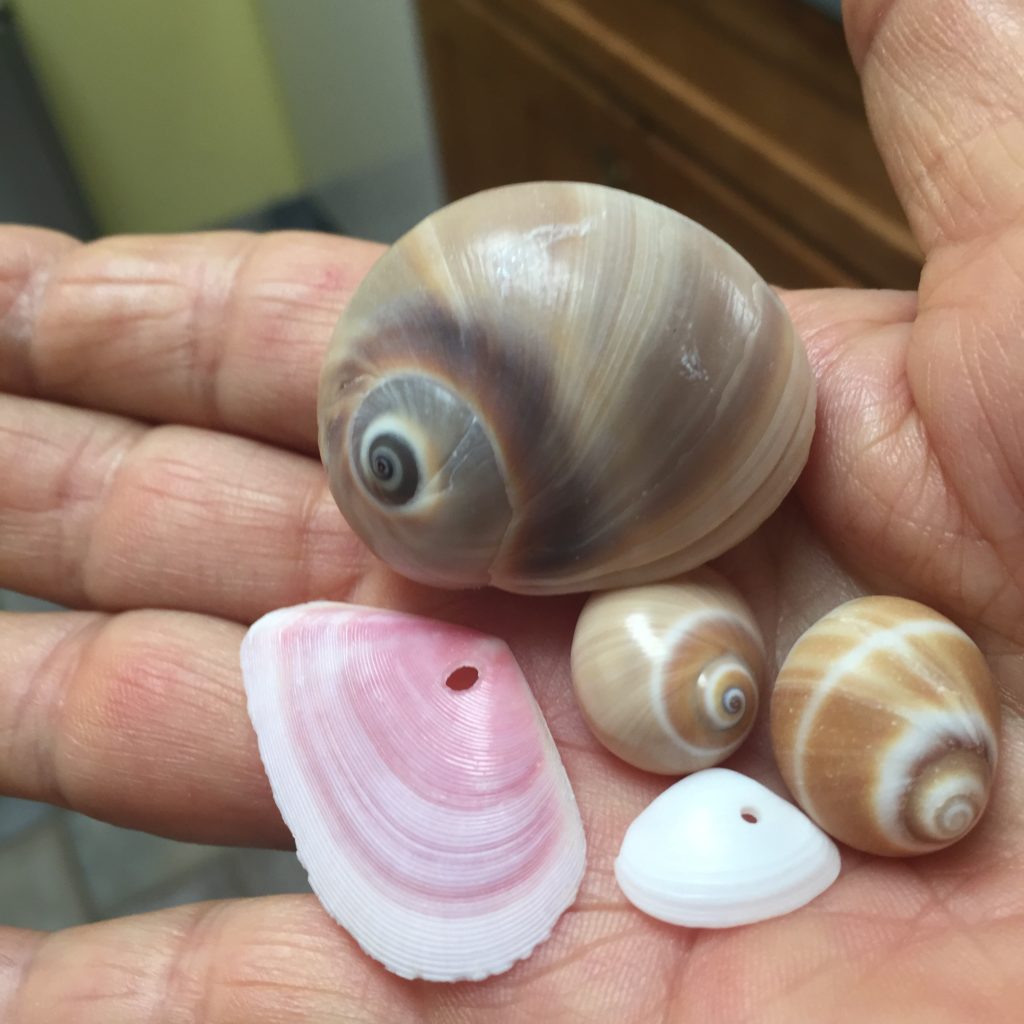Published in the Ocean Watch column, Honolulu Star-Advertiser © Susan Scott
January 28, 2017
I love moon snail shells. They’re marble smooth, patterned in rays of soft colors, and their whirls are classic. But just because the creatures’ homes look inviting doesn’t mean the animals that built them are. Moon snails are a nightmare on clam street.
Not that we, or their prey, usually see the snails in the water. Even after snorkeling on beaches littered with moon snail shells, I’ve never seen one live. That’s because moon snails skulk underwater below the surface of the sand, sometimes as deep as 7 inches.
They’re down there hunting for sand-dwelling clams, mussels and most any shelled animal they can catch, including other moons.
 Moon snails lurk beneath the surface of shallow to deep water,
Moon snails lurk beneath the surface of shallow to deep water,
burrowing down as much as 7 inches in the sand.
©2017 Susan Scott
Moon snails, and most others, get around by rippling their muscular foot, an organ beneath them that looks like an oval throw rug. When it senses a potential meal, a moon snail can inflate its foot with sea water to four times its shell volume, throw the front over its head and, well, run.
After the foot encloses its prey, the snail drags it to the sand’s surface and goes to work: Drill, baby, drill. That soft-bodied snails can drill holes in shells is hard to fathom. But those squishy bodies hold an arsenal of daggers and chemical weapons.
Moon and other snails have an extendable flexible snout, like a tiny elephant trunk. At the end is the snail’s mouth containing a tongue lined with sharp, curved teeth.
Often the moon turns its catch so the hinge is closest to its mouth. This may be the handiest way to grip the doomed bivalve, or it may be that drilling the hole directly over the bulk of the soft tissue inside makes for efficient dining.
While the snail hangs on with its foot, it curls its tongue, teeth outward, and pushes and pulls at the site while secreting acid. When it breaks through, the mouth sucks out the prey’s organs.
You can tell a moon snail hole from other drillers, such as drupes, whelks and murexes, because moons’ are countersunk. The empty moon snail shells we find on beaches are particularly attractive because the snails spent their lives plowing through sand, which polished the shell and prevented encrusting organisms from growing on it.
The drilling skill of moon snails, and other drillers, is visible on some beaches, where countless shells bear perfect pukas.
About 250 moon snail species live in shallow to deep waters, from tropics to poles. Hawaii hosts nine species, ranging from one-half to 1-1/2 inches tall. The largest moon snails live on the North American West Coast where they grow 5-1/2 inches tall. The day I find one of those, I’ll be over the moon.